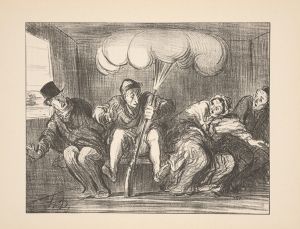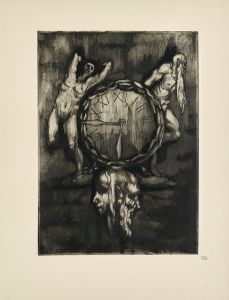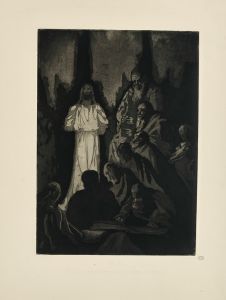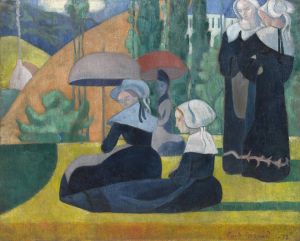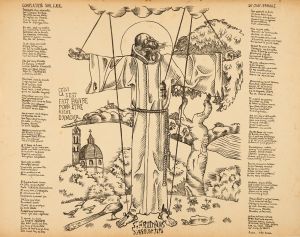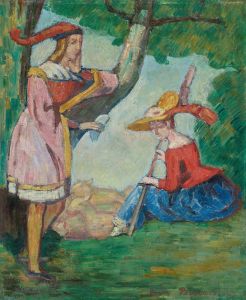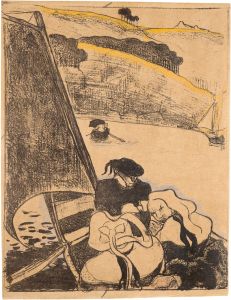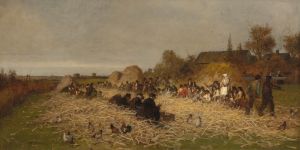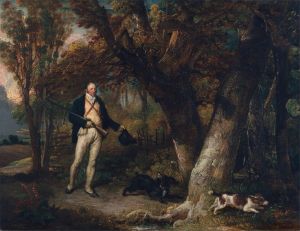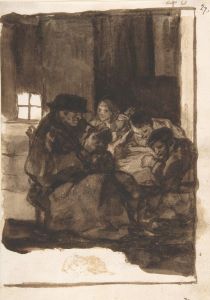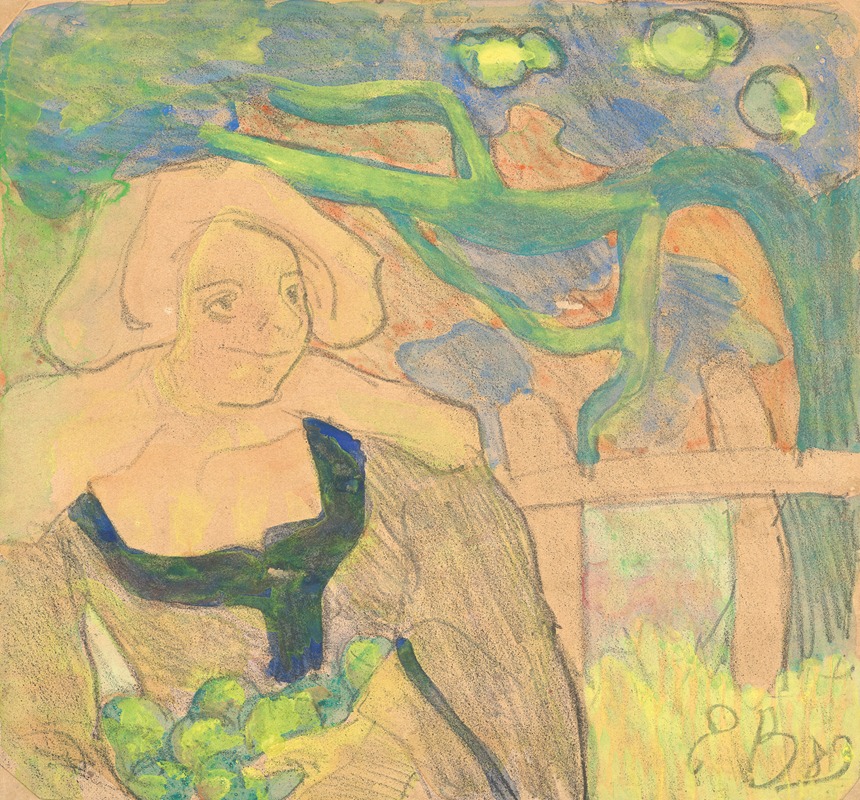
La Cueillette des pommes
A hand-painted replica of Emile Bernard’s masterpiece La Cueillette des pommes, meticulously crafted by professional artists to capture the true essence of the original. Each piece is created with museum-quality canvas and rare mineral pigments, carefully painted by experienced artists with delicate brushstrokes and rich, layered colors to perfectly recreate the texture of the original artwork. Unlike machine-printed reproductions, this hand-painted version brings the painting to life, infused with the artist’s emotions and skill in every stroke. Whether for personal collection or home decoration, it instantly elevates the artistic atmosphere of any space.
Émile Bernard's painting "La Cueillette des pommes" (The Apple Picking) is a notable work by the French Post-Impressionist artist, who was an influential figure in the development of modern art during the late 19th and early 20th centuries. Bernard, born in 1868 in Lille, France, was a contemporary and associate of other prominent artists such as Paul Gauguin and Vincent van Gogh. He played a significant role in the Symbolist and Cloisonnism movements, which were characterized by bold outlines and flat areas of color.
"La Cueillette des pommes" exemplifies Bernard's distinctive style, which often combined elements of Symbolism with a focus on rural and pastoral themes. The painting depicts a scene of apple picking, a common agricultural activity, capturing the essence of rural life in France. Bernard's use of vibrant colors and simplified forms reflects his departure from the more naturalistic approaches of earlier Impressionists, aligning instead with the Symbolist emphasis on conveying deeper meanings and emotions through art.
The composition of "La Cueillette des pommes" is marked by its structured arrangement and the use of bold outlines, a technique that Bernard and his contemporaries, such as Gauguin, developed to emphasize the decorative and symbolic aspects of their subjects. This approach, known as Cloisonnism, was inspired by the stained glass and cloisonné enamel techniques, where colors are separated by dark contours. In this painting, Bernard employs this method to create a sense of harmony and rhythm, guiding the viewer's eye across the canvas.
Bernard's work during this period was influential in the development of the Synthetist style, which sought to synthesize form and color to express the artist's emotional response to the subject. "La Cueillette des pommes" reflects this synthesis, as Bernard uses the apple-picking motif not merely as a depiction of a rural activity but as a vehicle for exploring themes of nature, labor, and the passage of time.
Throughout his career, Émile Bernard was known for his intellectual approach to art, often engaging in theoretical discussions with his peers about the direction of modern art. His correspondence with Vincent van Gogh and Paul Gauguin reveals his deep commitment to exploring new artistic ideas and breaking away from traditional methods.
"La Cueillette des pommes" is a testament to Bernard's innovative spirit and his contribution to the evolution of modern art. The painting remains an important example of how artists of the time were beginning to explore new ways of seeing and representing the world around them, paving the way for future movements such as Fauvism and Cubism.
Today, Émile Bernard's works, including "La Cueillette des pommes," are appreciated for their historical significance and their role in the broader narrative of art history. His paintings are housed in various museums and private collections, continuing to inspire and captivate audiences with their bold colors, dynamic compositions, and symbolic depth.





